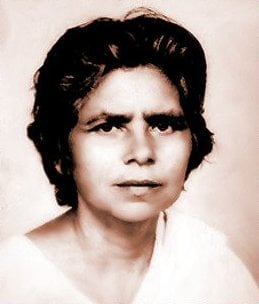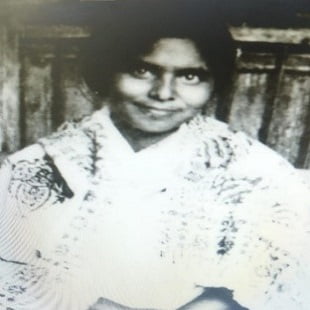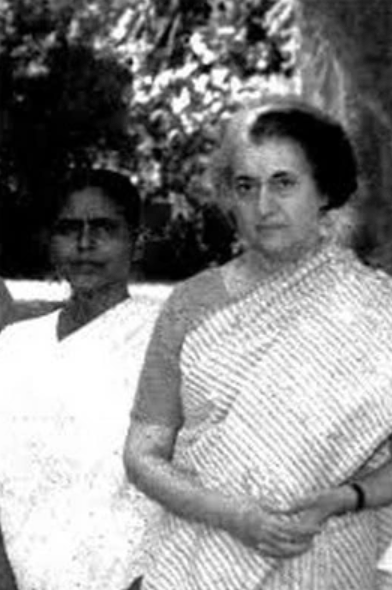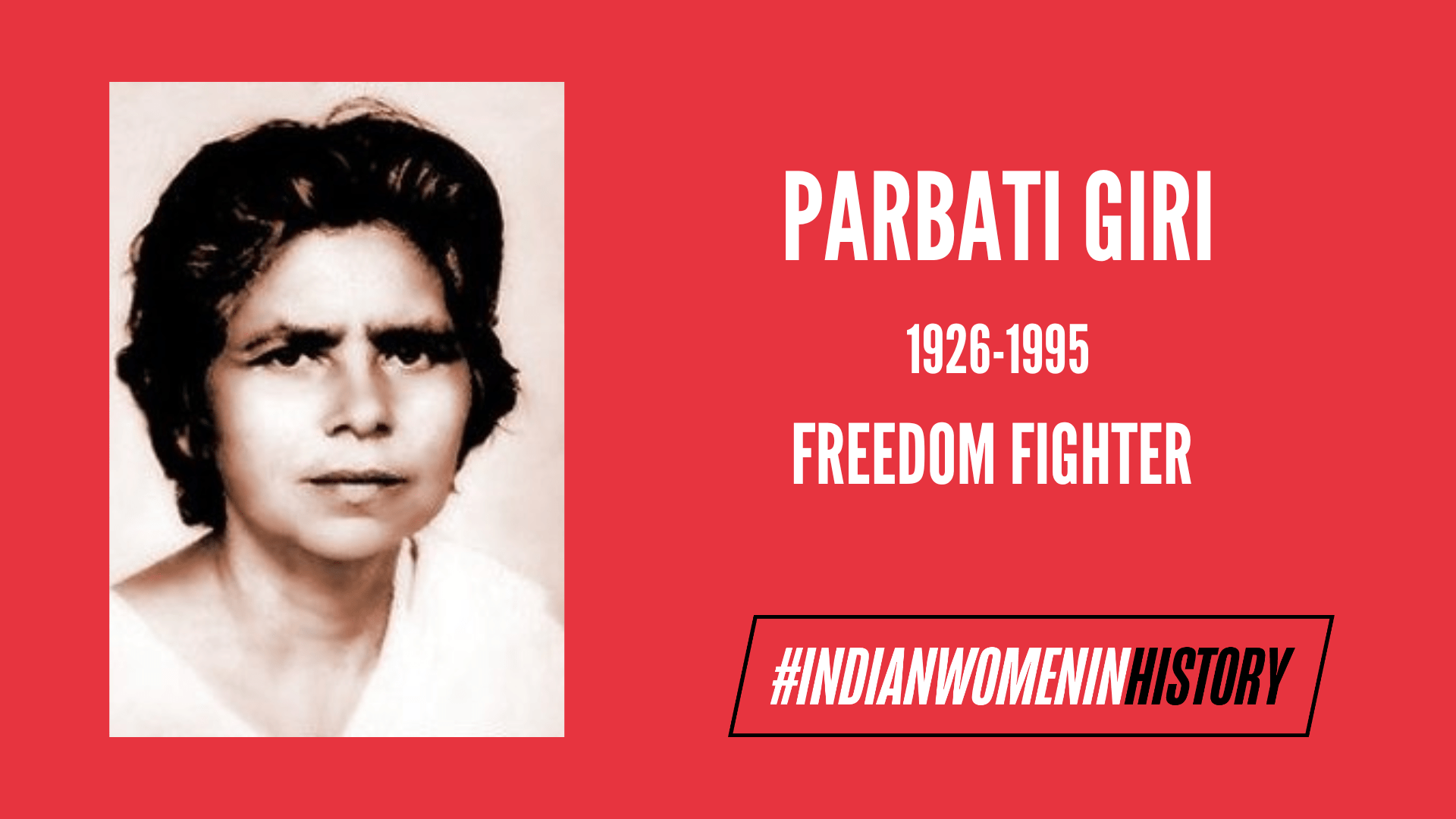Moved by Mahatma Gandhi’s call for the women of India to join the movement against British colonialism, a 12-year-old girl from the Samalaipadar village of Odisha dropped her education in the 3rd standard to turn out to be a fiery rebel against the colonial project and a dedicated Gandhian social activist. This was Parbati Giri, one of the many women fighters of the independence movement who have been denied their due credit in popular discourse.
Indian Nationalist Movement in Odisha and Women’s Role
Before the non-cooperation movement, Odisha was distant from the mainland nationalist movement since it was undergoing a crisis of carving its own regional identity. This changed when the Utkal Samilani, the only representative Odia body, was brought into the fold of the Indian National Congress in 1921, and one of the most influential and pioneering Odia reformers, Gopabandhu Das, acknowledged Mahatma Gandhi as their leader, and his visit to Odisha further solidified his position in the region. Thus entered the wave of Gandhism in the region of Odisha, which generated a large-scale response to the Non-Corporation Movement amongst the people.

Simultaneously, Mahatma Gandhi’s project to advocate for the participation of women in the nationalist movement was ongoing. One may argue that his idea of women’s role was reductive and confined to the traditional gendered norms, glorifying the self-sacrificial and silent-suffering qualities ‘instilled,’ in Indian women and making them the ideal practitioners of his ideology of ahimsa (or non-violence), “If non-violence is the law of our being, the future is with women.” This idea is further extended to gendering the khadi campaign by spinning and weaving khadi and boycotting foreign cloth, which Gandhi popularised among the women as their dharma.
Many political movements and uprisings in Odisha, like Non-Cooperation and the Salt March, among others, were successful because of Odia women’s contributions.
Although this idea has its issues, women were able to become active participants in the movement and contributed extensively all across India. The nationalist movement indeed benefited from women’s active contribution, but it also confined women to certain constructs and idealisations.
In Odisha, Rama Devi was the pioneering woman freedom fighter who had been inspired by her meeting with Gandhi in the same year, 1921, when he visited Odisha. Gandhi appealed to the women of the region to join the nationalist movement and donate their ornaments to help the country. Urged by Gandhi’s calls, women in Odisha were actively participating in the movement, who later became part of Satyagraha and took part in public demonstrations and gatherings. Many political movements and uprisings in Odisha, like Non-Cooperation and the Salt March, among others, were successful because of Odia women’s contributions.
A young activist is stirred to motion
Born on January 19, 1926, in the Samlaipadar village in the Bargarh district of Odisha to the family of the head of the village, Parbati Giri’s young sensibilities were influenced by the close-hand witnessing of the political activism of her uncle Ramchandra Giri, who was closely involved in the freedom struggle alongside his Congressmen colleagues Laxmi Narayan Mishra, Durga Prasad Guru, Bhagirathi Pattanayak, Ghanashyam Panigrahi, Nrusingha Guru, Dayananda Satapathy, and Fakira Behera. The profound discussions of these freedom fighters, of which she ended up being a passive observer as a young child, would deeply move her into activism and wanting to contribute to the nationalist struggle.

Young Parbati’s growing enthusiasm to serve the country and people was not overlooked by the adults around her, who recognised the child’s potential and urged her father to allow her to be a part of Congress’ activities. At the tender age of 11, in the year 1937, Parbati began assisting in the organisational duties of the Congress. In one pivotal meeting of the Congress just one year later, in 1938, Parbati would be introduced to the eminent woman freedom fighter Malati Choudhary, and inspired by her speech, she would ask to accompany her. It was Malati Choudhary who advised the young girl to go to Bari Ashram, an epicentre of the freedom movement in Odisha and an institution for Gandhian education and training run by the pioneering woman freedom fighter Rama Devi.
Unsurprisingly, the decision to let the young girl step out of the house, travel far, and attain this training was met with resistance by her family members, who had to eventually bend under the uncompromising stance of the hard-willed girl. And so, in 1938, Parbati Giri, along with Prabhavati Devi, a child widow, left for their journey to Bari Ashram.
Solidifying the political consciousness
Under Rama Devi and Gopabandhu Chaudhary’s influence and training, Parbati’s social and political consciousness grew. Rama Devi’s Gandhian ideologies, which involved working for the welfare of the downtrodden, mobilising women for the nationalist movement, working for women’s emancipation, and eradicating erstwhile untouchability, were imparted in Parbati during her close contact with the woman leader.
Parbati went on to attain proper training as a Gandhian and satyagrahi during her two-year stay in the Ashram, where she learned the spinning and weaving of khadi and worked to clean the colonies of Dalits.
The influence and close company of the women freedom fighters of Odisha throughout her childhood until her teenage years introduced her early on to the feminine realm of the nationalist movement, which would go on to culminate in her service for the emancipation of women. Her early introductions and opposition to the malpractice of erstwhile untouchability in her childhood would solidify as her consciousness grew, and she would dedicate herself to working for the Dalit and other marginalised communities. She would live in Dalit homes and continue to serve the Dalit people despite facing criticism from the Savarnas, and it is also said that she cremated the dead body of a Dalit woman who had been lying uncremated for days.
Responding to her newly developed political consciousness from the Ashram, Parbati would travel across villages from Bargarh, Sambalpur, Padampur, and Panimara to instil Gandhian ideology and values among the people and propagate the idea of swaraj. Her efforts were especially targeted towards mobilising the women and other marginalised communities, whom she also trained in spinning and wearing khadi.
Parbati staunchly opposed the purdah system and mobilised people against the practice. She was advocating for the empowerment and self-reliance of women, while also emphasising the role of education in achieving the same. Parbati therefore became a devout footsoldier of Gandhi’s ideas and actively worked to propagate them to bring the various marginalised communities under the fold of the nationalist movement.
The rebel and the reformer are born
Parbati’s rebellious and headstrong personality would fully come out in the open in the 1940s during the Quit India Movement, where she became one of the most important personalities leading the movement against the British. When the leading Congressmen of the district were arrested as political prisoners during anti-British protests, the onus fell on the remaining workers, like Parbati Giri, to keep alive the spirit of the Quit India Movement.

When public meetings had been declared prohibited in the country, Parbati Giri went ahead to defy British rule to mobilise the people and proactively raise slogans against the British. For this, she was also arrested like the other Congress leaders; however, since she was still a minor, albeit a rebellious one, she was released.
There are many other instances recounted about Parbati’s non-violent rebellion against British rule. The bold girl was often seen staging protests and demonstrations against the British and waving the tricolour in a display of courage and valour. Parbati staged a protest in the Bargarh court to ask the presiding lawyers to vacate the British law institution and join the non-cooperation movement against the British authorities. Moved by the young girl’s activism, some lawyers did leave the court. Those who chose to ignore the call to non-cooperation were handed over two bangles and made a spectacle of cowardice.
In another one of those anecdotes, Parbati went to the sub-divisional office of Bargarh and occupied the seat of the SDO to cheekily act like a judge. She was accompanied by two boys, Chandra Giri and Biranchi Pradhan, who acted like a peon and advocate, and when the SDO entered the office, she ordered the boys to tie the British-complying ‘culprit,’ with a rope and bring him to her. This was a particularly bold act against the authorities, and the police intervened to imprison all three of the rebels for two years. Finally, in 1944, Parbati Giri was released from Sambalpur jail along with other political prisoners like Nrusingha Guru, Durga Prasad Guru, Ghanashyam Panigrahi, Laxminarayan Mishra, and Bhagirathi Pattnaik.
Tales like these truly highlight the courage and vigour of the young political activist, who has been uncompromising in her values and stand since her childhood. The young girl was matching the activism and advocacy of the much more experienced and older Congressmen, making a mark on fellow leaders and common people alike.
Parbati’s life after Independence
After her release from prison, Parbati dedicated her entire life henceforth to serving the poor and marginalised. She went ahead to join the Kasturba Memorial Trust in 1945 to work alongside Rama Devi for rural women and children. Her activism started going beyond Odisha when she joined many national-level organisations to work for the welfare of the people. Post-1959, Parbati Giri started working independently as a social worker in not just Odisha but Bihar and Uttar Pradesh as well.
In 1975, a massive famine hit Odisha, which left the people, especially the poor, in miserable conditions without grains. The acute food shortage took many lives, forced people to leave their homes in search of grains, and orphaned many children.
Parabti Giri aligned herself with the welfare and rehabilitation programmes of the government to help set up foster homes and also took charge of one foster home. After the government stopped the short-term relief work, Parbati took it upon herself to establish Kasturba Gandhi Matru Niketan and other shelter homes for the destitute and orphaned.
Getting her due recognition
Parbati Giri’s relentless activism and service could not be ignored, and she was awarded honours like the Sarala Puraskar, the National Award from the Ministry of Social Welfare Government of India, and was also honoured by the Indian Red Cross, Odisha Branch, and the All India Freedom Fighters Association. At present, the ex-CM of Odisha, Naveen Patnaik, paid tribute to her on her birth anniversary and has also named numerous developmental projects in her honour.
Undoubtedly, Parbati Giri brought in the voices of Odia women in the masculinised nationalist discourse. Parbati dedicated her entire life to living by her life principles of Gandhian teachings while relentlessly and passionately serving the nation and the people. A freedom fighter, a social reformer, and an activist, the bright light of Parbati Giri’s contributions cannot be contained by the diminutive masculine discourse that may seek to bury her achievements.
About the author(s)
Sarah (She/Her) is your local student journalist and writer pursuing her Bachelor's in Literature from Delhi University. She seeks to strike a balance between a chaotic chronically online gen-z and an insatiable learner. At the risk of coming across as cheesy, she quotes Oscar Wilde on being asked to introduce herself, "To define is to limit."







truly inspiring 🫶